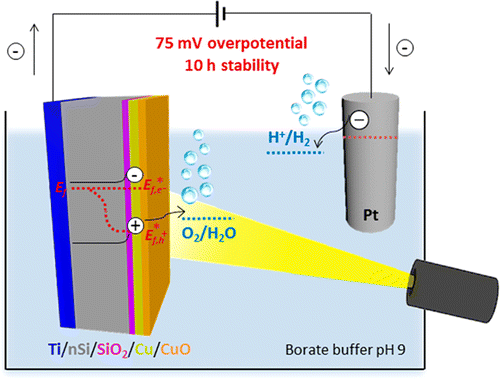One main difficulty for the technological development of photoelectrochemical (PEC) water splitting (WS) devices is the fabrication of active, stable and cost-effective photoelectrodes that ensure high performance. Here, we report the development of a CuO/Silicon based photoanode, which shows an onset potential for the water oxidation of 0.53 V vs SCE at pH 9, that is, an overpotential of 75 mV, and high stability above 10 h. These values account for a photovoltage of 420 mV due to the absorbed photons by silicon, as proven by comparing with analogous CuO/FTO electrodes that are not photoactive. The photoanodes have been fabricated by sputtering a thin film of Cu0 on commercially available n-type Si wafers, followed by a photoelectrochemical treatment in basic pH conditions. The resulting CuO/Cu layer acts as (1) protective layer to avoid the corrosion of nSi, (2) p-type hole conducting layer for efficient charge separation and transportation, and (3) electrocatalyst to reduce the overpotential of the water oxidation reaction. The low cost, low toxicity, and good performance of CuO-based coatings can be an attractive solution to functionalize unstable materials for solar energy conversion.
